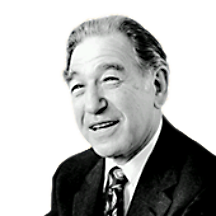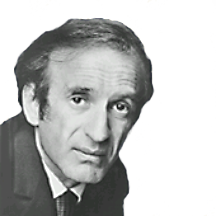Elie Wiesel was born in the town of Sighet, Romania, in 1928. When he was 15 years old, the Wiesel family was sent to a German concentration camp. Both parents, as well as a younger sister, perished in the camps, but Wiesel and two other sisters managed to survive.
At the close of World War II, Elie Wiesel went to France as a refugee and began studying at the Sorbonne University in Paris. In 1948, at the age of 19, he arrived in Israel as a military correspondent for a French newspaper, in order to cover the War of Independence.
He went on to become a foreign correspondent for the Israeli daily “Yedioth Ahronoth” and thereafter moved to New York, where he joined the staff of the Yiddish paper “Forverts”. Wiesel served as professor of Jewish Studies at New York university and from 1976, professor of humanities at Boston University.
After a self-imposed, ten year period of silence, Wiesel described his experience as a youth in a concentration camp in his book “Night”, published in 1956. The book first appeared in Yiddish, but was later translated into many other languages. Since then, he has written another 30 books and gained a worldwide reputation.
Elie Wiesel was awarded the Nobel Peace Prize in 1986. According to the Prize committee, “Wiesel has given us not only an eyewitness account of what happened, but also an analysis of the evil powers which lay behind the events. His main concern is the question of what measures we can take to prevent a recurrence of these events.”
Elie Wiesel is a fighter for human rights. His name has been connected with humanitarian causes all over the world, such as: the struggle of Soviet Jewry, the Indians in Nicaragua, the civil war in the former Yugoslavia, the Kurds, victims of Apartheid in South Africa and famine victims in Africa. Many of the numerous articles he has published are concerned with issues of oppression, and as a lecturer, he is in demand worldwide. Furthermore, Wiesel has served as advisor to presidents of the United States and France and to groups that deal with universal, ethical issues.
In his writing and his work, Elie Wiesel has not attempted to garner pity for the victims or the survivors of the holocaust. Rather, he has tried to combat the apathy to evil that makes us accessories to crimes against humanity. He wants to awaken the conscience of each of us. As he once said, “You can get out of Auschwitz, but Auschwitz can never get out of you.”
The man who would not allow the world to forget the holocaust.





